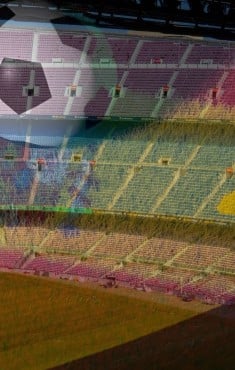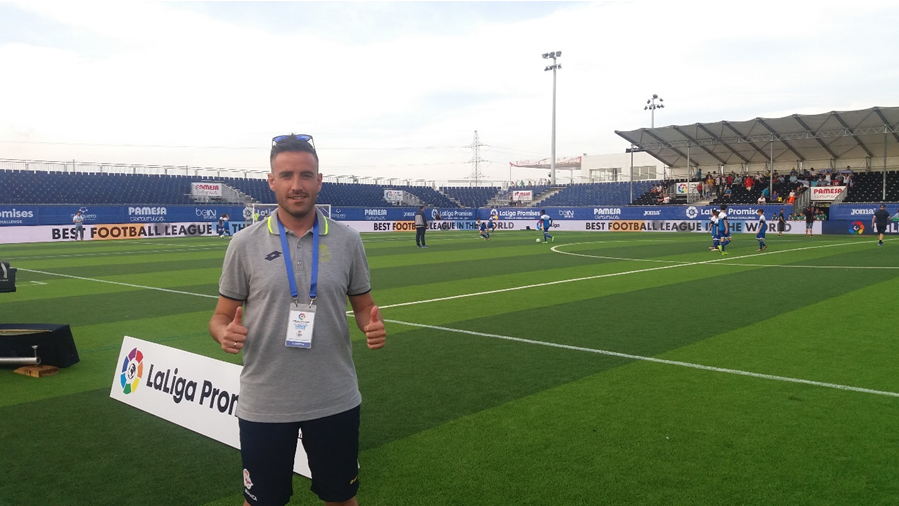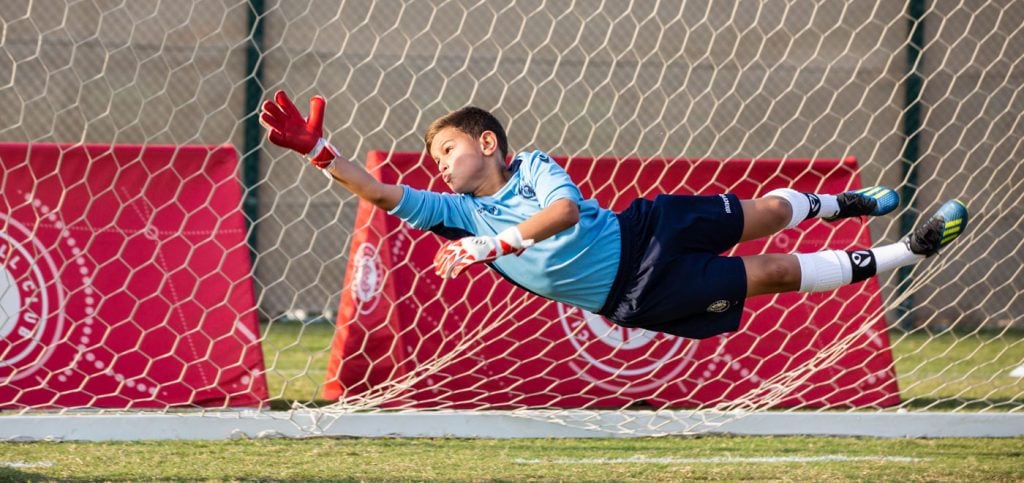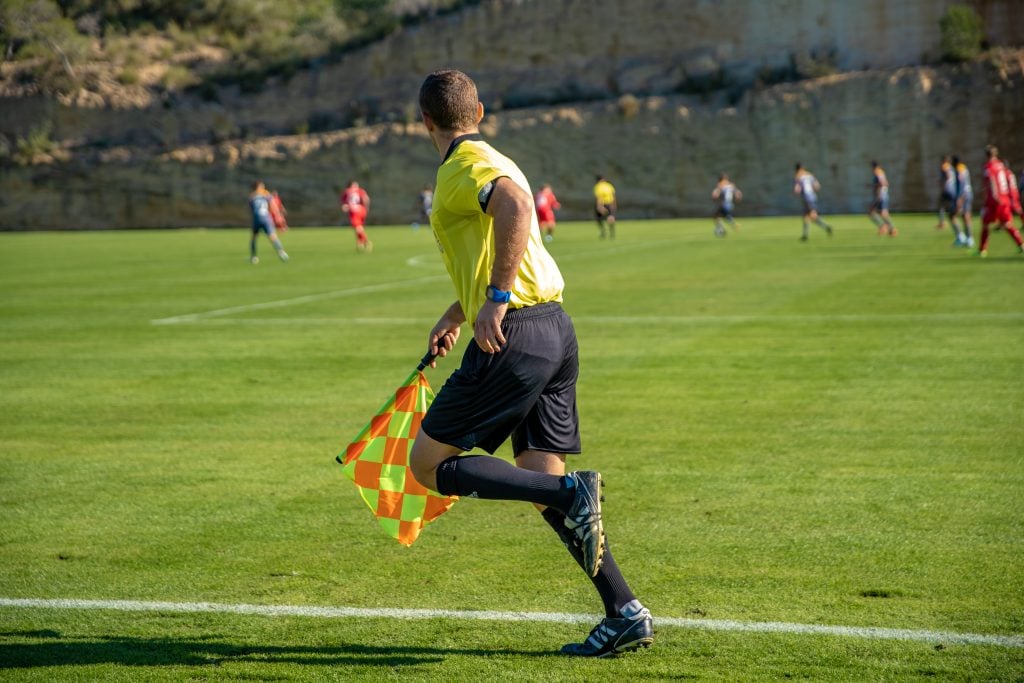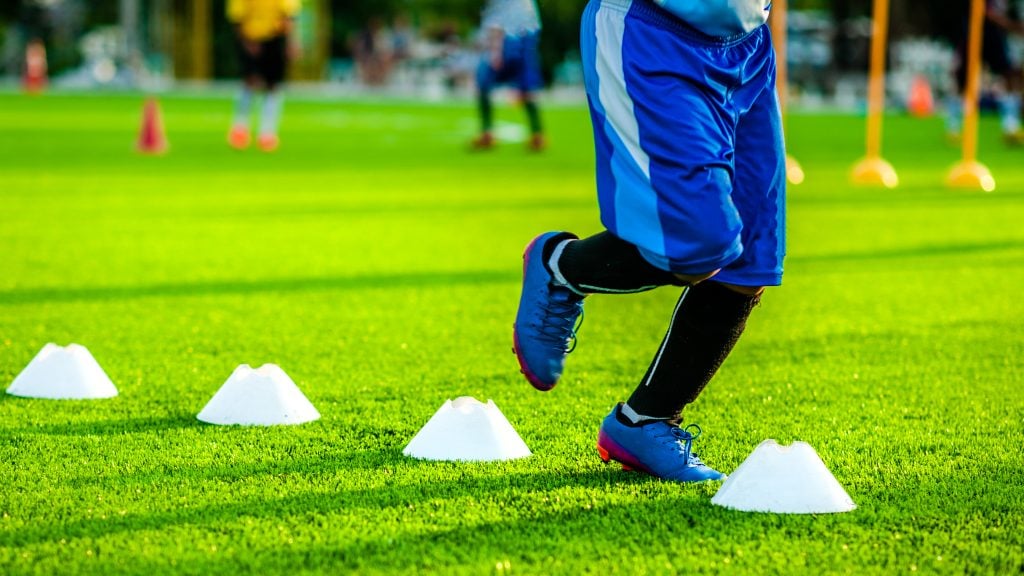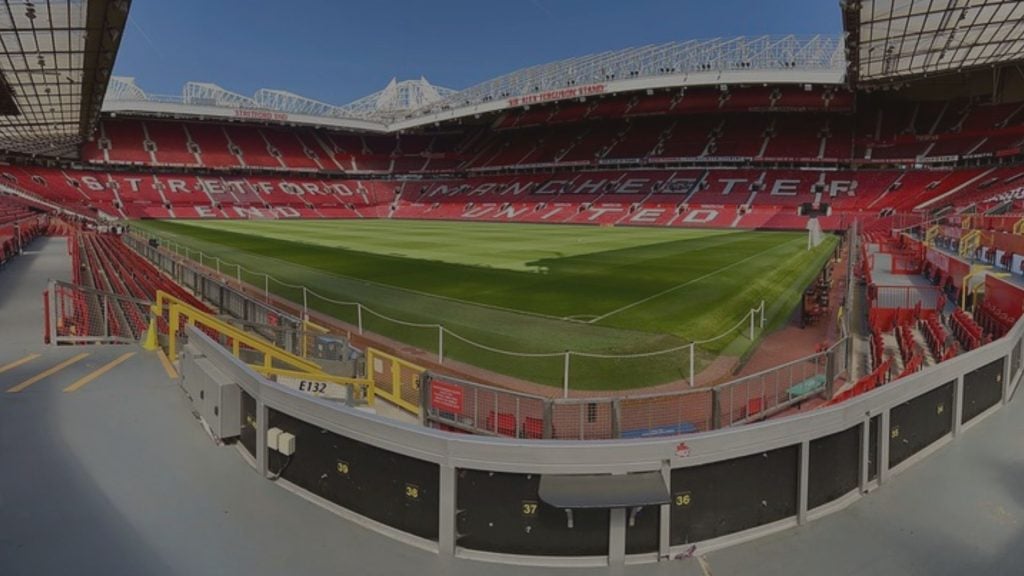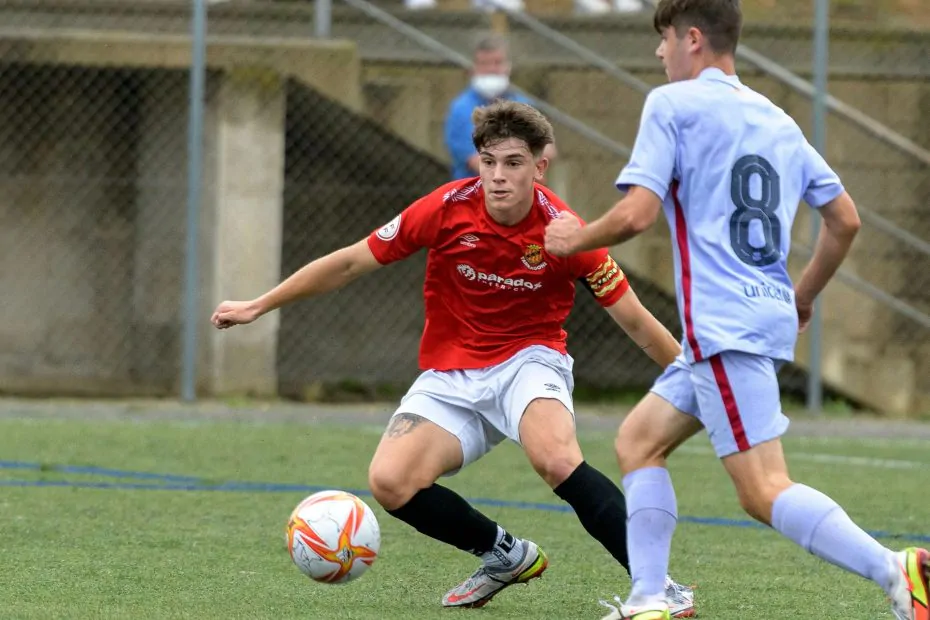Spanish soccer isn’t only known for the excitement of La Liga, but also for its well-established system of Spanish soccer levels, ranging from the very youngest ages right through to the elite.
Don’t miss this definitive guide to understanding the different levels in Spanish soccer, from the youth divisions through to the competitive Primera División and beyond.
Soccer Levels Classified by Ages – Grassroots Soccer Levels
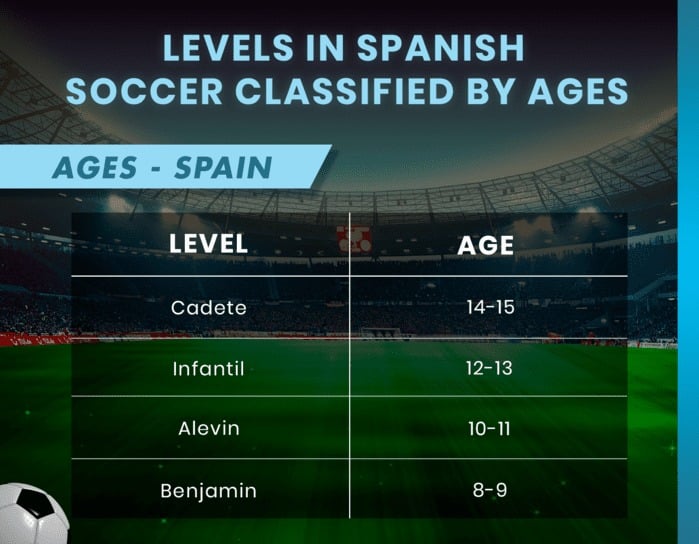
The grassroots soccer levels in Spain are focused on the development of promising youngsters. These levels cover a child’s first steps in soccer through to his or her progression to more competitive levels.
We’ll now describe each of the age levels in Spanish football. The names of these categories apply to boys and girls alike.
Alevín and Benjamín Categories
The Alevín and Benjamín categories are the first levels in Spanish grassroots soccer. At this level, children begin to familiarize themselves with the game, with a focus on learning basic skills and teamwork.
The Benjamin category is designed for boys and girls who are 8 or 9 years old.
The Alevín category focuses on 10 and 11-year-olds. This, in turn, is divided into sub-categories: one for 10-year-olds, and one for 11-year-olds.
Infantil Soccer Category (12 – 13s)
The progression to the infantil (junior) levels of soccer brings with it a more tactical and technical approach. Players begin to develop a deeper understanding of the game and participate in more structured competitions.
Cadete Level
The Cadete level is for players aged 14 to 15. At this level they face more intense demands. They’re expected to improve their individual and collective skills as they prepare to make the jump to higher levels.
Honor and Preferente Sub-Divisions
Within the Cadete category, the Honor and Preferente sub-divisions stand out. The Honor Division represents the pinnacle of youth soccer in Spain, while the Preferente offers a platform for continued development.
Juvenil Soccer Levels
Understanding the juvenil soccer categories is crucial in order to nurture emerging talent. In this category, players range from 16 to 18 years old. It’s broken down into several subcategories that reflect competitiveness and national or regional coverage.
This category comprises 114 teams as follows:
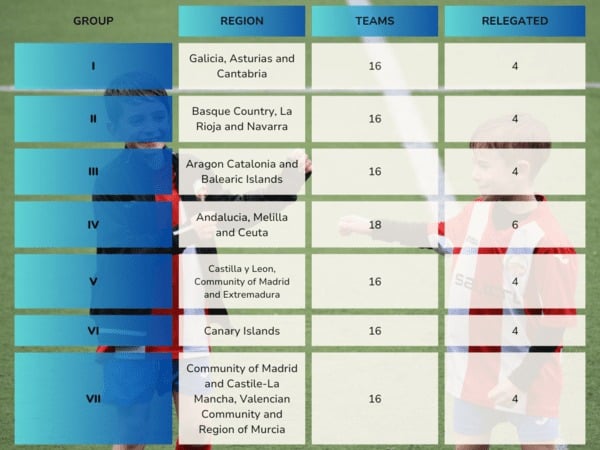
1st Level: Honor Juvenil Division (National)
The Honor Juvenil Division is the elite national youth league. Renowned clubs compete in this division, which provides an experience that is close to real professional soccer.
It takes place in September and is played in a league format. One team is promoted, four teams are relegated, and they play each other twice. As with normal soccer, there are 3 points for a win and 1 point for a draw. The team with the most points wins the league.
Second Level: Liga Nacional Juvenil
The Liga Nacional Juvenil (National Youth League) is a recognized top-level national competition – the second tier of Spanish youth soccer. It has 17 divisions with approximately 18 teams in each, and provides opportunities for promising players to develop.
3rd Level: Liga Juvenil Preferente (Regional)
At a regional level, the Liga Juvenil Preferente serves as a springboard for young talented players to move up to higher levels. The regional federations organize them according to different licenses, forming regional divisions in order to reduce travel and club expenses to a minimum. For this reason, this Youth League is an attractive option for promotion to national competitions.
Fourth Level: Provincial Leagues
The Provincial Leagues are the bedrock of the youth system, encouraging soccer development at a local level.
Spanish Soccer Divisions
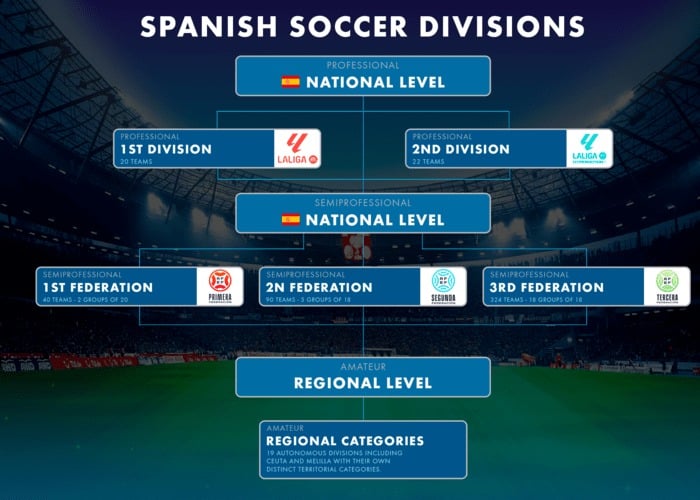
First Division (La Liga)
The First Division (La Liga), together with the Second Division, is one of only two categories with professional status in Spain, both under the jurisdiction of the National Professional Football League (Liga Nacional de Fútbol Profesional). The remaining divisions are under the jurisdiction of the Royal Spanish Football Federation (RFEF) and their respective regional federations.
This league is acknowledged as one of the five main leagues in Europe, joining the Premier League (the first level in English soccer), the Italian Serie A, the German Bundesliga, and the French Ligue 1. In the UEFA coefficient rankings, it’s currently in second place. In 2020, it was ranked as the fourth-best league in the world according to the official annual ranking issued by the International Federation of Football History and Statistics (IFFHS). It’s worth noting that it held first place solidly from 2010 to 2018.
In addition, La Liga is currently second out of all the national leagues as regards most titles in worldwide official international competitions and is the current leader in Europe.
La Liga’s nine teams with an outstanding international record (Real Madrid, Atlético de Madrid, Barcelona, Valencia, Sevilla, Zaragoza, Málaga, Villarreal, and Celta de Vigo) have amassed a combined total of 83 trophies.
Second Division
The Second Division, also known as La Liga Hypermotion, is the second level of professional soccer in Spain and is organized by the Liga Nacional de Fútbol Profesional (the National League of Professional Football). Over the years, the number of teams and groups has varied, however, in recent years it has been a single 22-team league and is a springboard for clubs aiming for promotion to the first division (La Liga). This exciting, intense competition kicks off in August or September and concludes in May or June. Teams compete in a forty-two-match round-robin league, with the usual 3 points for a win and 1 for a draw. When the season concludes, the top two teams are promoted to La Liga, with the team finishing top being crowned champion.
Third Level – RFEF First Division
The Third Division is the lowest level of the national league system but is by no means any less competitive. It’s regulated by the Royal Spanish Football Federation (RFEF in Spanish). It’s made up of 40 teams divided into 2 divisions of twenty each. In each division, they play each other twice over 38 matchdays, and the order of the matches is randomly assigned. The teams compete for promotion to the higher divisions, and, at the end of the season, the top four teams are promoted to the Second Division, and the bottom five teams in each group are relegated to the Second Federation. At the end of the season, a limited number of teams qualify for the Copa del Rey.
Fourth Level – RFEF Second Division
The RFEF Second Division is the Spanish league system’s fourth level, and is another important tier for teams aiming for promotion. There are 90 teams in all, divided into 5 groups of 18 teams. As in the rest of the leagues, they compete annually from the end of August or the beginning of September until May or June of the following year. From each of these five groups, the first 2 teams are promoted to the RFEF First Division and the bottom 5 teams are relegated to the Third Division.
RFEF Third Division
The RFEF Third Division is the lowest level of Spain’s soccer pyramid, where regional clubs compete for promotion and recognition. It consists of 18 groups of 18 teams each – a total of 324 teams – and is the largest division of all. In each group there are 36 matchdays, with the teams playing each other twice. A total of 27 teams are promoted to the second division at the end of the season.
Women’s Soccer: Levels and Categories
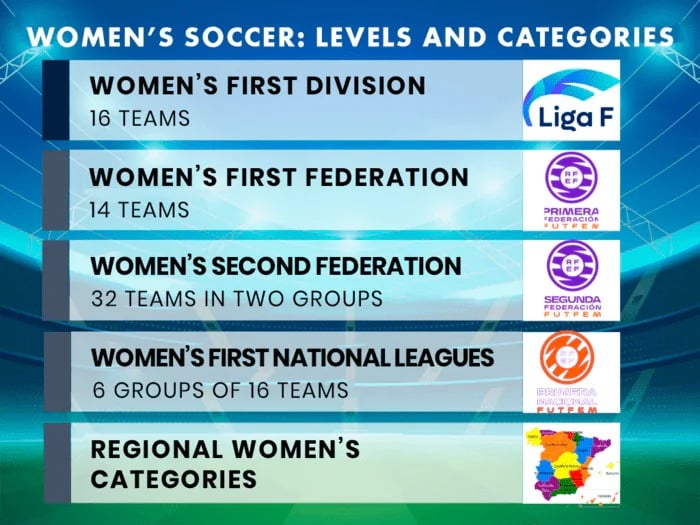
There are several divisions in women’s soccer, among which we can highlight the following:
Women’s First Division
The Primera División Femenina (Women’s Soccer’s First National Division) underlines the growth of women’s soccer in Spain. Teams such as Barcelona Women and Atletico Madrid Women compete in this elite league, which is the only professional women’s soccer league in Spain. It’s made up of 16 teams in one league, with all the teams playing each other twice. The team that finishes top qualifies for the UEFA Champions League.
First Women’s Federation
This league is the second level in the Women’s Soccer League System in Spain, and is regulated by the Royal Spanish Football Federation. It has been restructured several times, but is currently made up of 14 teams with a semi-professional status. The top two teams are promoted to the first division and the bottom two are relegated to the Second Women’s Federation.
Second Women’s Federation
This is made of 32 teams divided into two groups of 16. Up until the reorganization, it was known as the Women’s Second Division and is the entry level to the women’s elite group, offering young women opportunities to develop and even be promoted to higher levels. The champions of each of these two leagues are automatically promoted to the Spanish First Division (Primera División RFEF) the following season.
First National Women’s League
The Primera Nacional Femenina (First National Women’s League) is an extremely important level that nurtures and encourages emerging talent in Spanish women’s soccer. There are 6 groups of 16 teams – 96 teams in total. The teams that finish top in these 6 groups are automatically promoted to the Women’s Segunda Federación, and those finishing in the bottom 3, along with the two 13th-placed teams with the lowest coefficient, will be relegated to the regional categories.
Regional Levels
The regional categories encourage and nurture the development of women’s football in Spain, providing opportunities for local players.
The Importance of Grassroots Soccer
Grassroots soccer is the key to developing young talent in Spain. These levels don’t only cultivate soccer skills, but also instill values such as discipline, teamwork, and respect in football. Coaching at the clubs’ lower levels is vital in order to hone the young players’ technical and tactical skills.
The youth academies in clubs such as FC Barcelona and Real Madrid underline the importance of a solid grassroots soccer infrastructure. For this reason, choosing a High-Performance Academy such as the one in Barcelona is a great option when it comes to developing skills and pursuing success in professional soccer.
Assessing and Selecting Players in the Different Soccer Levels
Soccer players who are striving to join teams at different levels will need to attend soccer tryouts (trials). It isn’t only about showcasing technical skills, but also about demonstrating a competitive mindset, a strong work ethic, and the ability to adapt to different match situations – all crucial aspects if a player wants to succeed in a professional team. These are the key stepping stones that can help them to fulfill their dream of becoming top-level soccer players.
Grassroots Competitions and Tournaments
At youth level, there are several competitions and tournaments in Spain that can help to highlight emerging talent and foster the development of young footballers. The Copa del Rey Juvenil and the Copa de Campeones Juvenil are two examples of tournaments that provide young players with a platform to showcase their skills and abilities.
Not only are these events vital for a player’s technical development, but they also foster the competitive mindset that’s so crucial for professional soccer players. To cite two famous examples, Andres Iniesta and Xavi Hernandez both came through these youth levels.
Challenges and Opportunities within the Different Spanish Soccer Levels
Succeeding in football is certainly no easy feat, and players will face many challenges on their way up through the ranks. However, the right decisions at the right time can create many opportunities.
- Challenges Facing Players
With everything from competitive demands and pressures to injuries, every single level of soccer in Spain presents players with its own unique challenges. The intense competition and heightened expectations truly test the resilience of young soccer players.
- Opportunities for Promotion and the Importance of Performance
Despite the many challenges, the different tiers of Spanish soccer offer exciting development opportunities. Players who excel in youth competitions are often promoted to higher levels, and a good overall performance is paramount to ensure progression.
- Inspiring footballing stories
The greatest players in history haven’t succeeded by chance. They have worked and strived right from the outset, and their training has been a key factor in their success. Here are some success stories that highlight the importance of receiving the right training:
- Lionel Messi, who joined FC Barcelona’s youth academy from Argentina, is a living testimony of how perseverance can open doors to previously unimaginable opportunities.
- Kylian Mbappé was recruited from Clairefontaine by Monaco’s academy at the tender age of 14 due to undoubted talent. He soon shone, and first-team coach Leonardo Jardim promoted him to the U-20 team and then to the first team, setting the stage for a successful career.
- David Beckham was selected by Manchester United’s youth academy at the age of 16 due to his on-field ability and accurate free kicks. This early opportunity greatly contributed to his success, as he refined his skills and eventually became a world soccer icon.
What Soccer Level Should My Child Start At?
The choice of the correct soccer level for your child is determined by their age and skills. The youngest children typically start in categories such as Alevín and Benjamín, but children with exceptional skills or those who are clearly advanced for their age may be considered for inclusion in more advanced levels. To do so, they need to sign up for a soccer tryout and be evaluated by coaches and technical directors. During these tryouts, they may receive an invitation to join a higher-level team or even be selected by a top-level team.
Conclusion
In short, the different soccer levels in Spain cover a wide spectrum right from the earliest ages to the elite. Understanding this framework is essential for players, coaches, and fans alike. From grassroots to professional competitions, each level plays a crucial role in the ongoing evolution of Spanish soccer.
Ultimately, the exciting world of youth soccer in Spain is an exhilarating journey, full of challenges, opportunities and the promise of a bright future for up-and-coming talent.

